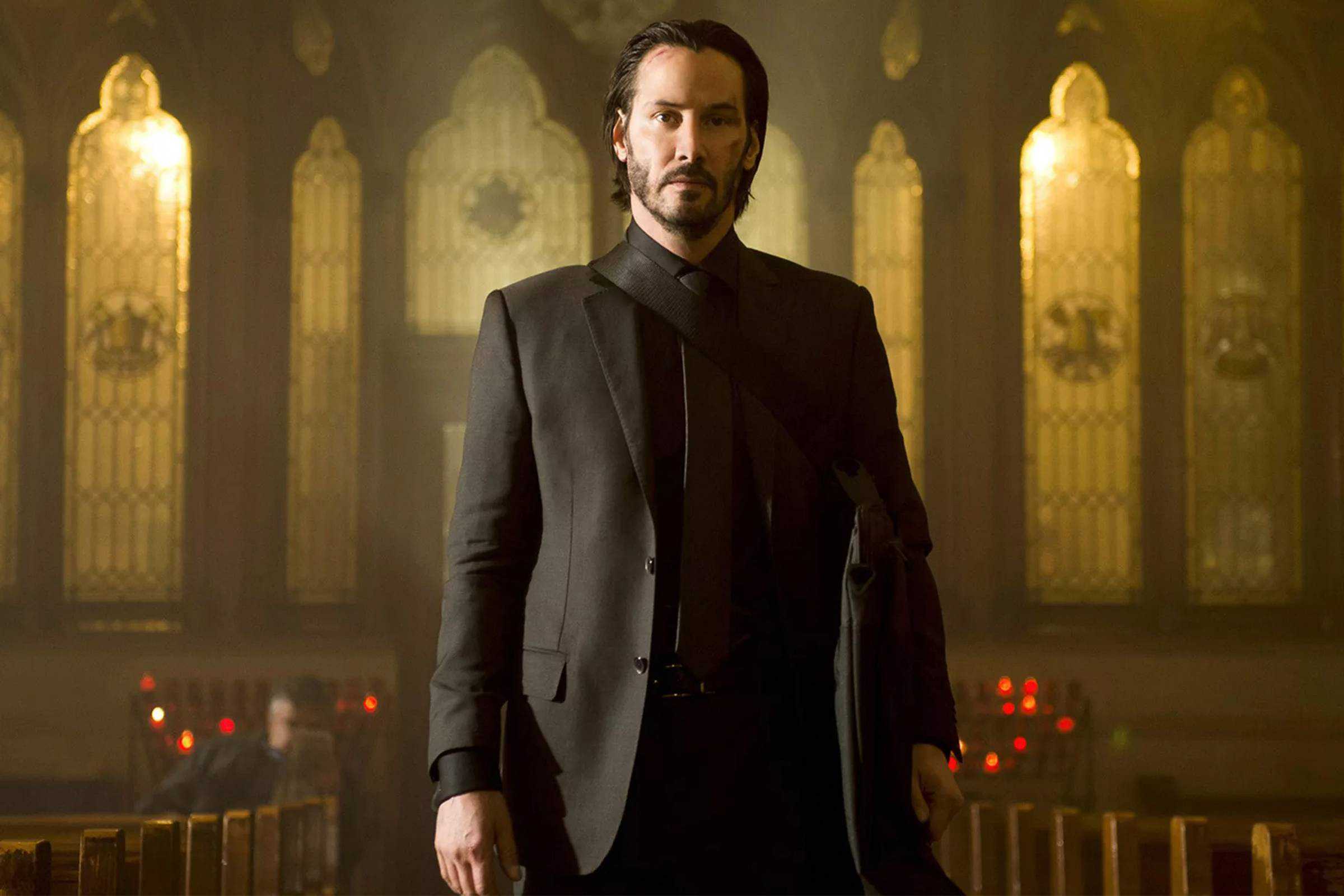With the impending release of John Wick: Chapter 4, it’s worth pointing out an overlooked aspect of the franchise: its use of Catholicism.
The John Wick franchise has become a cultural phenomenon since the release of its first installment in 2014. Despite its simple plot about a man seeking revenge for the death of his dog, the franchise has managed to entertain audiences with its blend of stylish action sequences and world-building. With each new installment, the franchise has expanded on the mythology of its universe, introducing new characters and exploring its hidden underworld of assassins.
These films are made for pure entertainment and, in writing this, I don’t pretend to make them sound deeper than they are (for they are not deep). However, I do find it interesting that among the many aesthetic choices its creators could have made, they chose to infuse these films with the language and, at times, even the imagery of Catholicism. Why do this? Why incorporate Catholic elements into an action film? What does this add to the franchise that it otherwise wouldn’t have? Before exploring these questions, let’s start with an even more basic one: what are the Catholic elements in John Wick?
Catholic Elements in John Wick
The John Wick franchise is set in a world where the Russian mob, to which John Wick once belonged, is part of a larger international organization of assassins. This world has its own hierarchy, vocabulary, and practices. The Continental Hotels, in the films, function as sanctuaries similar to how cathedrals did in the Middle Ages. These hotels are consecrated spaces where no one can be killed there unless the space is previously deconsecrated, which sometimes happens in the series.
The criminals within the organization have their own “adjudicators” who ensure that the consecrated space is run properly. This term “adjudicator” has its parallel in the Church’s Code of Canon Law (spoken of in terms of “adjudication”). In the third film, John Wick visits the organization’s highest authority, a pope-like figure called the Elder, in the desert (in Greek, an elder is a presbyter). There he pledges his “fealty” to this Elder – fealty being a word that hearkens back to Medieval Europe. Part of the reason why Wick went to the desert was to do the work of remembrance (of his wife) and penance (for his transgressions against the code of his criminal organization), which is a Desert Father motif. There are many penitential practices in John Wick, such as the seven cuts of penance earlier in the third film.
The franchise is replete with Catholic references. Images of crosses and crucifixes show up occasionally throughout the series. Latin, the official language of the Church, is sometimes used, such as in the third film’s subtitle: Parabellum. Various characters, including Wick himself, signal their fealty by saying “I have served. I will be of service,” which evokes St. Michael the Archangel’s “Serviam,” meaning “I will serve,” and is his response to Lucifer’s “I will not serve.” Assassins that break their fealty are “excommunicado,” which quite literally means excommunicated in Catholic parlance.
A detail that I find unlikely to be a coincidence is that John Wick’s main antagonist in the second film is named Cassian. When combined with Wick’s first name, it becomes John Cassian, a fourth-century Church Father known for his ascetical writings and desert spirituality. The choice of Cassian as a name is too specific for it to be a mere chance.
Sanctuary, consecration, crosses, fealty, excommunicado, the desert, penance, remembrance, serviam, adjudication – these are some of the many Catholic elements that the creators of John Wick use to build the world of this franchise.
What Does Catholicism allow John Wick to do?
The use of Catholicism in the John Wick franchise reveals much about John Wick as a character. John Wick is a man of duty, and his moral code is based on principles. As trivial as it sounds, the dog is sacred to John Wick. The dog is sacred because John Wick’s wife gave it to him before dying of some illness or something (the movie doesn’t really bother to explain). The dog was John Wick’s living connection to his wife, whose love led him away from a life of murder and death. Her love saved him and the dog was a testament to that. When the Russian mobsters kill his dog, John Wick reacts with the rage of witnessing something sacred destroyed. Throughout it all, Wick remains faithful to the memory of his wife and dog. This idea of remembrance of his love and penance for his evil deeds is central to John Wick’s character arc.
The John Wick franchise uses Catholicism as a way of visually presenting these ideals of remembrance, penance, fidelity, sacrifice, and ritual. In a sense, the aesthetics of Catholicism are appropriated as a metaphor for John Wick’s own moral compass. It allows the filmmakers to draw a visual link between John Wick’s inner and outer conflict. John Wick is torn between fidelity to his wife and fidelity to his community of assassins because the world he inhabits is a world bound by duties, rituals, and obligations.
How is John Wick’s use of Catholicism reflective of how Hollywood tends to perceive the Church?
John Wick’s use of Catholicism brings to mind adjectives like esoteric, hierarchical, communal, ritualistic, sinister, and the paradox of being both baroque and austere. This is, to an extent, similar to how the horror genre tends to use Catholicism.
The Catholic Church usually appears in horror films as an institution that possesses an ancient wisdom capable of combating evil forces and as the only source of hope in supernatural situations. This works because horror films presuppose a premodern universe where characters are exposed to forces (demons) they cannot control and that threaten modern ideals of individual self-realization and autonomy. The Church is often portrayed as emblematic of an anti-modern institution, capable of performing ancient rituals and commanding loyalty from its members. Similarly, John Wick uses Catholic imagery and vocabulary as an aesthetic model to create a subterranean criminal organization that looks arcane, ritualistic, and hierarchical, which is in line with how Hollywood tends to view the Church.
As a character, John Wick cares almost exclusively about duty, remembrance, and penance. In that sense, he is not a typical modern character and can only make sense in a premodern world underneath the surface of a modern one. The franchise relies on Catholic aesthetics to create this premodern world.
Why Do All These Catholic Elements Enhance This Action Film?
Movie after movie, John Wick is ambushed again and again. Why doesn’t he just surrender? All he accomplishes by constantly defending himself is just delaying the inevitable: death.
There is a moment in Chapter 2 in which the main antagonist, Santino D’Antonio, orders John Wick to kill his sister, Gianna D’Antonio. Now, Wick doesn’t want to do this since he cares about her, but he has to. When Wick encounters Gianna, she opts to cut herself and bleed out as a way of having agency over her death. As she bleeds out, she asks Wick, “do you fear damnation, John?” To which he replies in a very Keanu-monosyllabic-way, “yes.” After this, he approaches her, holds her hand and, when she starts to faint due to the lack of blood, he shoots her dead.
Why does he do this? Given their last conversation, Wick kills her in order to turn her death from a suicide into a homicide and thus spare her from eternal damnation. This theology makes absolutely no sense in the real world (few things in this franchise do). But for John Wick, who clearly believes in damnation, this makes a sort of sense. Wick’s incessant struggle to survive is not just instinctual. There is a cosmic dimension to his struggle. He wants to set things right according to the series’ theologically twisted conception of divine justice.
The John Wick franchise uses the Catholic imaginary as a template for the films’ institutional hierarchy of assassins. Beyond its aid in world-building, Catholicism also enhances this action film by developing Wick as a character. The script itself adds little to no depth to Wick’s character (he barely speaks in full sentences). However, the Catholic elements in the film visually represent what is implicitly at stake for Wick. His asceticism is in the service of a larger purpose of justice, memory, and order – values that are threatened throughout the series. Catholic symbols bridge the world and protagonist in this series and point to the values John Wick fights to uphold.
-//-
Image courtesy of Summit Entertainment.


